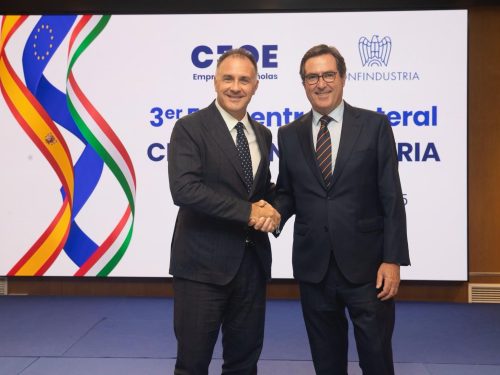News
Share on
"180 billion in total value, equal to about 10% of the national GDP, a direct added value of about 65 billion, more than 230 thousand companies and more than 1 million employees, i.e. 4.1% of total employment, and with one of the highest economic multipliers: for every euro produced directly, another 1.8 are activated in the national economy, which becomes 2.7 in the maritime transport sector alone". Thus Mario Zanetti, Confindustria President's Delegate for the Economy of the Sea and President of Confitarma, in an interview with Il Sole 24 Ore, emphasises the strategic nature of the Blue Economy on National Maritime Day.
"The Sea Economy is a strategic sector for the competitiveness of our country," and "Confindustria, with the technical group I chair," Zanetti said, "is developing a strategic document, which will be presented in July, with the aim of proposing concrete solutions for the competitive development of the entire sector. Moreover, Confindustria wants to position itself as the main interlocutor, as the only national association in which all the sectors that make up the blue economy are represented'.
The sector, Zanetti reiterated, has to face some critical issues, such as the need to overcome the difficulty of finding qualified personnel, with the alignment between training and labour demand. These topics will be spelled out in the strategic document. "Companies in the sector are showing a widespread lack of specialised professional figures, both in technical and highly specialised roles. There is also a lack of transversal skills,' Zanetti explained, 'which require interdisciplinary training courses that combine technical, management and regulatory skills. The mismatch between business demands and availability exists and today, more than ever, it is a critical issue for the entire sector. Sectors are evolving rapidly and training should respond more effectively to the new requirements'.
The strategic document on the EoM will also address the revitalisation of the sector's competitiveness based on three key drivers:
- Infrastructure and Ports: our ports must become true hubs of the future, modern, digital, sustainable, with targeted investments and unified, streamlined and effective governance. In this context, the energy transition plays a key role and needs huge economic resources that could partly come from ETS taxation, the revenues of which should be earmarked for investments in the sector's green transaction;
- Carriers and fleets: there is an urgent need to simplify rules, support innovation and accompany the sector's ecological transition;
- People and Skills: why we need to bridge the gap between school and business, strengthen technical training and make seafaring careers more attractive to new generations.
Finally, Zanetti emphasised that 'in view of the annual updates to the Mattei Plan, Confindustria believes it is strategic to introduce a chapter dedicated to the Economy of the Sea, with a specific focus on training and professions,' because the growth of the entire Blue Economy sector also depends on training.
















